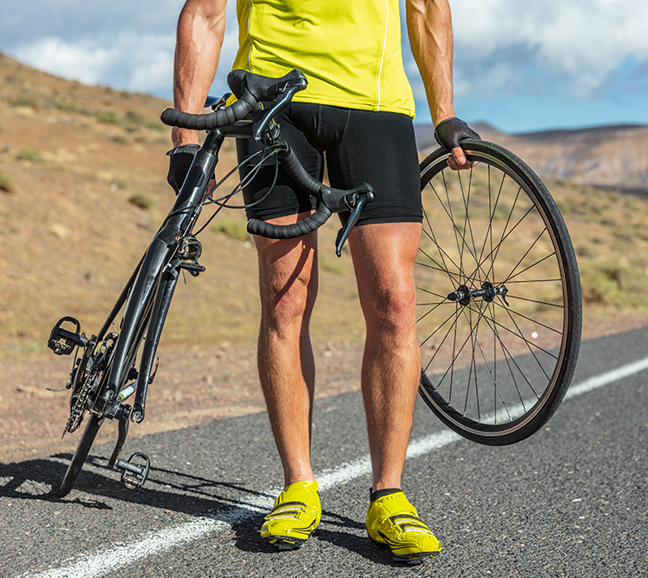The derailleur gears – what do you need to know about them to use a bicycle in a pleasant way?

The gears make cycling easier and make the ride smooth. However, this is only if the gears are used correctly. So, find out the types of gears and how to adjust them.
What are the types of bicycle gearing?
The bicycle gearing is a part of the bicycle drivetrain. They are responsible for changing gears (ratios) in a single-track vehicle. Thanks to them, cycling different terrain is easier and more comfortable. Their failure-free operation, reliability, efficiency, easy gear changes, as well as the price depend on the solution and mechanism used. Therefore, there are the following types of gear fixing in a bicycle.
The hub gears are hidden within the wheel hub. This is the most popular type of bicycle gearing in the city bikes. Thanks to the possibility of assembling the chain guard, the bicycle drivetrain gets less dirty and less damaged. The chain guard is protecting your clothes against getting dirty and screwing into the bicycle chain. Derailleur gears (external gears) are the most popular type of bicycle gearing, the operation of which is to shift the chain between the chainrings. The simple design means cheaper maintenance and high durability. This type of bicycle gearings works well on the of off-road paths.
The front derailleurs work for two or three chainrings. They have to be suited to the diameter of the seat tube, so they are available in few sizes. They are clamped with a clamping ring right to the bicycle frame or to the bottom bracket. The rear derailleur is the mechanism that shifts the chain at the rear sprockets. Derailleurs are secured to the bike with a mounting bolt to the frame’s derailleur hanger or directly to the bicycle frame. The rear derailleur consists of frame and slipper. To have the best quality of ride it is recommended to mount both types of the derailleurs – front and rear.
In terms of usage, following derailleurs can be distinguished: mountain bike MTB -, road-, and trekking – gears. MTB types of derailleurs are used for mountain bikes, trekking bikes and dirt bikes, usually in front and rear versions. Road derailleurs are lightweight and less resistant than MTB versions. City and trekking gears are a slightly modified version of MTB gears, distinguished by a good price-quality ratio. These models are designed for universal trekking bikes.
How to adjust bike gears?
Proper gear adjustment is essential for a safe and enjoyable ride. You can do it yourself at home, while on the road you can use a bicycle repair station. A properly equipped point contains the necessary tools and accessories that will allow you adjust the gears efficiently and effectively.
How to do it correctly? For a rear derailleur, shift the chain to the smallest sprocket at the rear and the largest sprocket at the front. Next, check the cable tension and slightly loosen the bolts that hold it. Adjust the adjusting screw “H”. The correct screwing is evidenced by the fact that after turning the crank, the chain moves smoothly on the smallest sprocket. If there is a grinding or clicking noise, tighten the screw a quarter of a turn. Also make the adjustment of the “L” screw. To do this, turn the crank and move the chain with your finger to the next sprockets. If the chain does not come off, the gears are working properly. Finally, index the derailleur – tighten the barrel screw as far as it will go, and then attach the shifting cable. Adjust its tension until the gears run smoothly.
When it comes to adjusting the front derailleur, start by checking that it is properly fitted. Drop the chain at the front on the small chainring and check the tension of the shifting cable – if it is loose, tighten it. Then, drop the chain from the rear to the centre of the cassette and remove the “H” and “L” screws. Test the chain on the smallest chainring. If it falls off when turning the wheel, tighten the bolt “L”. Do the same on the largest chainring by tightening or loosening the bolt “H” accordingly. Finally, index the derailleur.

